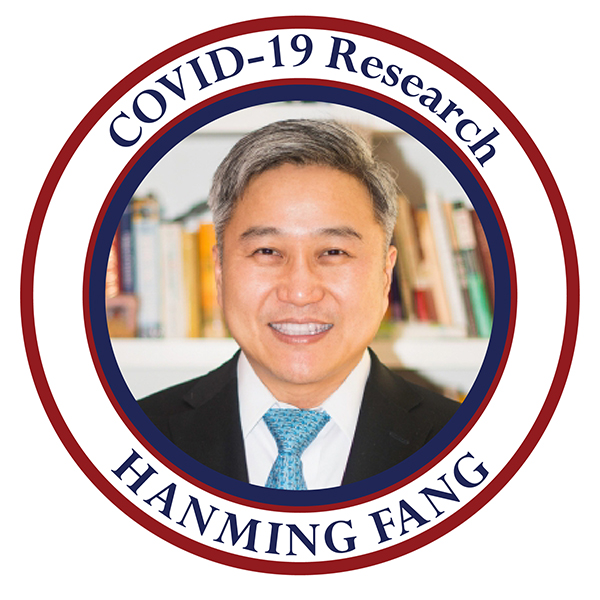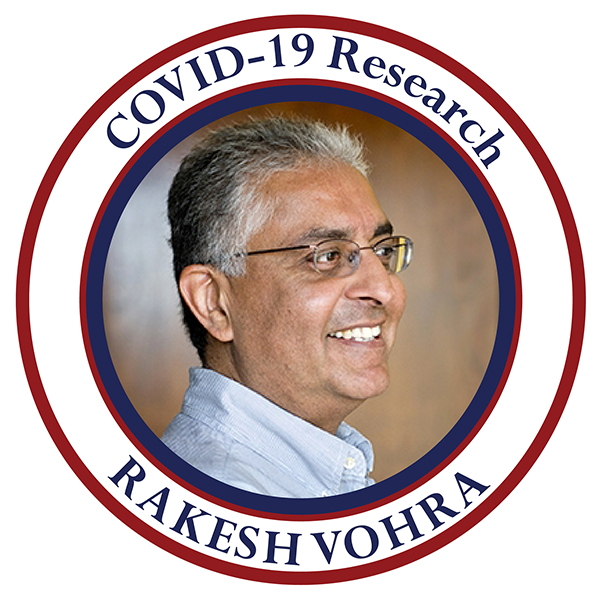The particular strength of our Department in Health Economics and its connection to macroeconomics and empirical microeconomics pays off. Our faculty look at all aspects of the pandemic from measurement to policy, to long run effects and to many other related issues.
Penn Experts Talk About COVID-19
COVID-19 School Closures: Earnings and Welfare Impacts
The Fiscal and Welfare Effects of Policy Responses to the COVID-19 School Closures NBER Working Paper 29398 Dirk Krueger, University of Pennsylvania, CEPR, CFS, NBER and Netspar Nicola Fuchs-Schundeln, Goethe University Frankfurt, CEPR and NBER Andre Kurmann, Drexel University Etienne Lale, Universite du Quebec a Montreas, CIRANO and IZA...
{"preview_thumbnail":"/sites/default/files/styles/video_embed_wysiwyg_preview/public/video_thumbnails/bU_CYyADK_c.jpg?itok=dCMlUeik","video_url":"https://www.youtube.com/watch?v=bU_CYyADK_c","settings":{"responsive":1,"width":"854","height":"480","autoplay":1},"settings_summary":["Embedded Video (Responsive, autoplaying)."]}
Forecasts by Penn Experts
-
Fernandez-Villaverde with coauthor Jones provide a dashboard with forecasts of the evolution of the pandemic for Many Countries, States, and Cities. Their paper Estimating and Simulating a SIRD Model of COVID-19 for Many Countries, States, and Cities poses and estimates epidemiolgical models where the way people contact with each other has been shrinking over time:.
-
Schorfheide with coauthors Liu and Moon provide forecasts of Covid-19 infections for a panel of more than one-hundred countries. Their paper Panel Forecasts of Country-Level Covid-19 Infections documents the Bayesian methodology that they use.
-
Schorfheide with coauthor Song propose how to do real time forecasting with mixes Frequency VAR during a pandemic in Real-Time Forecasting with a (Standard) Mixed-Frequency VAR During a Pandemic.
-
Mariano and Ozmucur construct indicators in Fighting COVID-19: Performance of Countries in the First Half of 2020 of how different countries have fared during the Covid-19 pandemic. They use both health and economic indicators.
What to Do
-
Krueger and Rios-Rull with Fed Researchers Glover and Heathcote look at the differential impact of the pandemic on young versus old, on first line workers, hedged from unemployment but in more danger from the pandemic, and second line workers, in trouble from the economic slowdown. They also assess how they favor different policies in Health versus Wealth: On the Distributional Effects of Controlling a Pandemic. This paper was discussed in the New York Times.
-
Ordoñez with coatuhor Herrera explore the determination of policies to the COVID-19 challenges. They show how relative comparisons across countries induce herding when policymakers are concerned by their popularity. The induced policy contagion induces some countries to choose less efficient policies than they would in isolation. The Political Economy of Pandemics
-
Mendoza with co-authors Rojas, Tesar, and Zhang sees the relation of lockdowns and health care systems' saturation as the result of shocks to the subsistence level of health that is larger at higher levels of capital utilization in A Macroeconomic Model of Healthcare Saturation, Inequality & the Output-Pandemia Tradeoff. They then look at the optimal lockdown policies in this paper.
Measurement of the Spread of COVID-19
-
Atal jointly with Alé-Chilet and Dominguez on accounting for the unprecedented drop in non-COVID-19 related visitis to the ER's. It turns out that a lot of it has to do with lower mobility of people due to the lockdowns. Activity and the incidence of emergencies: Evidence from daily data at the onset of a pandemic.
-
Fang with coauthors Wang and Yang on the measurement of how the lockdown of Wuhan contained the spread of the virus in the rest of China. Human Mobility Restrictions and the Spread of the Novel Coronavirus (2019-nCoV) in China.
-
Krueger with coauthors Uhlig and Xie on what are the effects of doing nothing in terms of shutdown but letting citizens reallocate their consumption voluntarily into social distancing activities. Macroeconomic Dynamics and Reallocation in an Epidemic.
-
Mariano and Ozmucur provide an empirical evaluation of countries’ performance in fighting COVID-19, utilizing a performance index based on four health and economic indicators: deaths per population size, deaths per confirmed cases, and quarterly real GDP and monthly unemployment rate relative to pre-pandemic values. Fighting COVID-19: Patterns in International Data, Expanded.
Long Term Effects
-
NEW - Krueger with coauthors a Fuchs-Schundeln, Ludwig and Popova assess the long term consequences of the reduced schooling and reduced income caused by COVID-19 after taking into account various parental remedial measures. The Long-Term Distributional and Welfare Effects of Covid-19 School Closures
-
Ordoñez with coatuhor Erol on how social distancing is creating a a new network of social relations with ramifications on growth and inequality. Social and Economic Distancing.
-
Vohra and coauthor Talamàs on the possible dangers of vaccines that are only partially effective Free and perfectly safe but only partially effective vaccines can harm everyone.
-
Diebold on tracking the pandemic recession Real-Time Real Economic Activity: Exiting the Great Recession and Entering the Pandemic Recession.
Other Ongoing Research at Penn Econ / PIER
-
Behrman has added COVID-19 telephone surveys or other elements to a variety of projects:
- Impact of ante-natal pollution on birth and early-life outcomes in Guandong, China (with Xiaoying Liu and Emily Hannum).
- Longitudinal survey (since 1998) in Malawi (with HP Kohler and Iliana Kohler).
- Longitudinal survey in Chile (with Irma Elo and David Bravo).
- Longitudinal survey for parents of young school age children in Ghana (with Sharon Wolfe, Betta Aurino, Larry Aber).
-
Fang is studying optimal lockdown and reopening policies in SIR models. He is also looking at how politics affects the mitigation policies chosen across counties. Another of his projects involves the evolution of labor markets in China both during and after the outbreak.
Faculty Researchers
 |
 |
 |
 |
 |
 |
 |
 |
 |
 |
